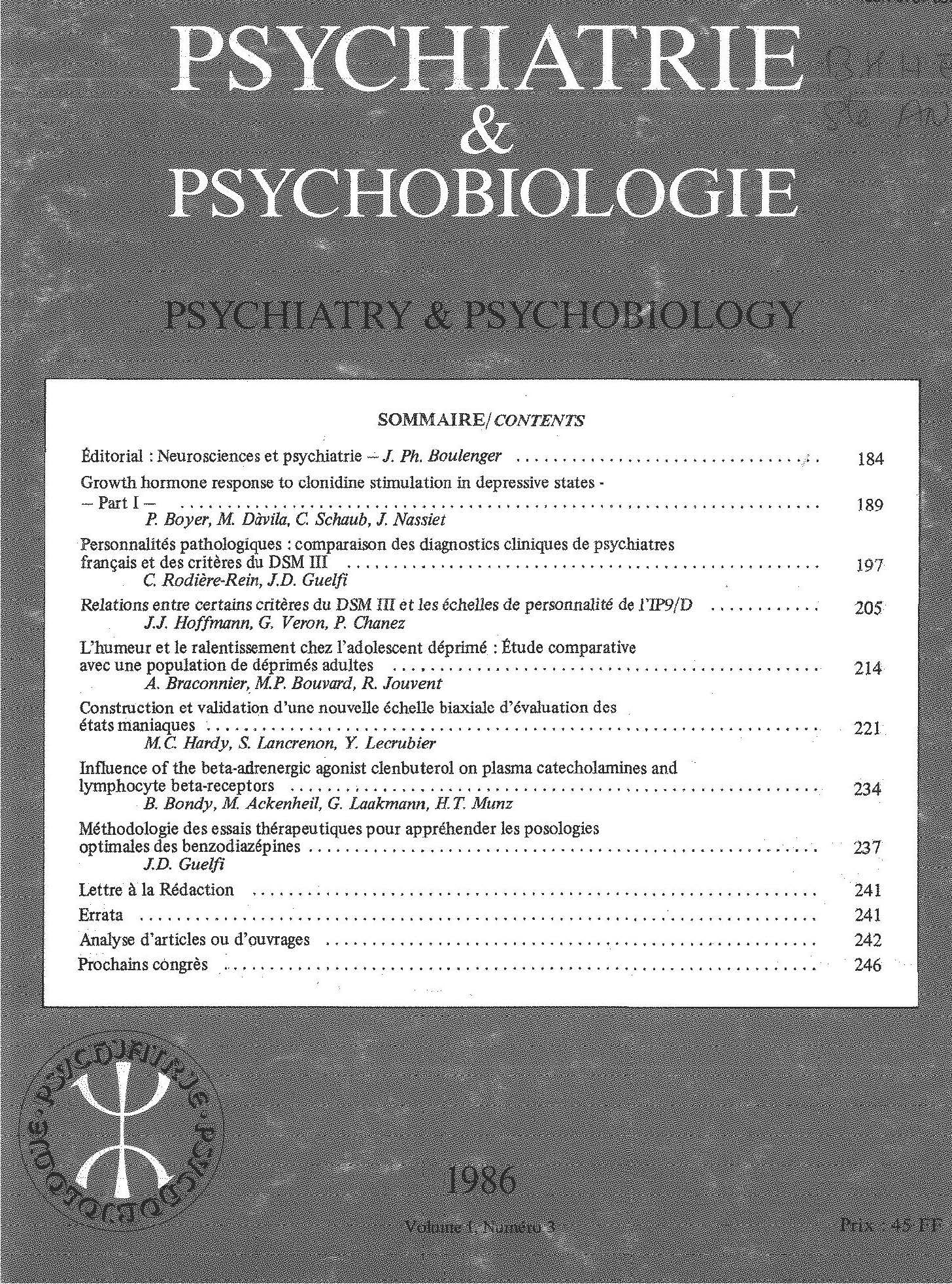No CrossRef data available.
Article contents
Les stéréotypies
Published online by Cambridge University Press: 28 April 2020
Résumé
Les différentes conceptions des stéréotypies sont passées en revue: celles des auteurs allemands, français et plus récemment celles du DSM-III R. Sur le plan descriptif, les stéréotypies de mouvement, de posture, du langage Parlé et écrit, des pensées et des hallucinations sont analysées en détail ainsi que leurs caractéristiques associées. Le rôle physiologique et développemental des stéréotypies chez l'enfant, leur valeur de défense lors de situations de tension ou face à la complexité de l'environnement, leur vertu compensatrice en l'absence de stimulation sensorielle sont soulignés. Chez les schizophrènes, 2 études font état de prévalence de 11 et 26% ; leur valeur pronostique est étudiée; la Présence de mouvements anormaux chez les schizophrènes est corrélée à un âge de début de la maladic plus précoce et un pronostic plus sombre. Chez l'enfant, la cécité congénitale, le retard mental et l'autisme sont les causes principales des stéréotypies pathologiques; le lien entre stéréotypies et conduite automutilatoires est discuté. Chez le dément, jusqu’à 77% du temps serait consacré à des activités stéréotypées. Enfin, l'aspect biochimique est envisagé; le modèle amphétaminique met en évidence le rôle de la dopamine dans la genèse des mouvements stéréotypés; néanmoins d'autres neurotransmetteurs semblent impliqués: acétylcholine, sérotonine, GABA, peptides opiacés.
Summary
The different conceptions of stereotypes have been studied; the German and French conceptions in particular and, more recently, the DMS III R rating scale. We give a description of stereotypes and associated features in different spheres: movement, posture, speech, writing, thinking and hallucinations. We have noticed their specific role in physiology and psychologic development, their defensive dimension during acute situations or confronted with a complex environment, their compensatory value in the absence of sensorial stimulation. Two separate studies, conducted on patients suffering from schizophrenia, have shown the prevalence of such a disorder to be about 11 and 26%, respectively.
The prognostic value has also been studied and, when abnormal movements exist, it seems that the illness begins earlier and the prognosis is worse. In young children, blindness, mental retardation and autism are the main causes of stereotypes. The relation between stereotypic and self-injurious behaviour is discussed. In demented subjects, 11 % of the activities are stereotypically related. Finally, the biochemical aspect is discussed. The amplietaminic model shows ‘hat dopamine plays a role in the creation of stereotypes although other neurotransmitters such as acetylcholine, serotonin, GABA, and opioid peptides may be involved.
Keywords
- Type
- Revue
- Information
- Copyright
- Copyright © European Psychiatric Association 1989



Comments
No Comments have been published for this article.